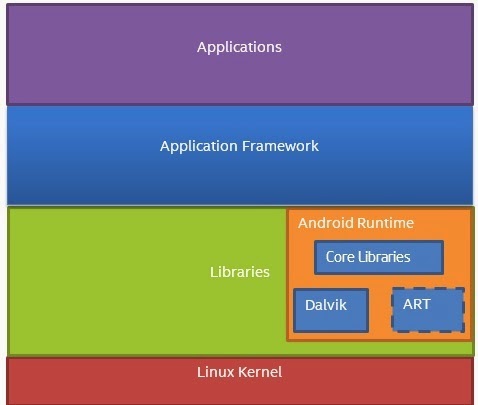The Android Runtime (ART) is the successor to the Dalvik Virtual Machine (DVM) and is the default runtime environment used in modern versions of the Android operating system, starting from Android 5.0 Lollipop. ART was introduced to improve performance, efficiency, and overall system stability compared to its predecessor. Here are some key features and aspects of the Android Runtime (ART):
- Ahead-of-Time (AOT) Compilation: ART uses an ahead-of-time compilation approach, which means that the bytecode of an Android application is compiled into native machine code during the app installation process. This compilation step is performed on the device itself, resulting in optimized and pre-compiled machine code that can be executed directly by the device’s processor. This approach reduces runtime overhead and improves application performance.
- Improved Performance: By pre-compiling the bytecode into native code, ART eliminates the need for just-in-time (JIT) compilation during runtime, which was used by the Dalvik Virtual Machine. This results in faster app startup times, reduced input latency, and improved overall responsiveness of Android applications.
- Enhanced Garbage Collection: ART introduced a more efficient garbage collection mechanism compared to the DVM. It utilizes a concurrent garbage collector called Concurrent Mark and Sweep (CMS), which reduces pauses and interruptions in the application’s execution during garbage collection cycles. This leads to smoother app performance and a better user experience.
- Improved Debugging and Profiling: ART provides enhanced debugging and profiling capabilities for developers. It offers more detailed and accurate information during the debugging process, including improved stack traces and method execution profiles, which helps developers identify and fix issues in their applications.
- Compatibility with Existing Apps: Although ART introduced significant changes compared to the DVM, it maintains backward compatibility with apps developed for the older runtime. Android’s app packaging format, the APK (Android Package), can include both DEX bytecode and native code, allowing apps to run on devices with either the ART or DVM runtime.
- Improved Security and Memory Management: ART includes various security enhancements, such as improved memory protection mechanisms and stricter app sandboxing, which contribute to a more secure app environment. Additionally, ART uses a more efficient memory management model, reducing memory consumption and improving overall system stability.
Overall, the Android Runtime (ART) is a key component of the Android operating system, responsible for executing and managing Android applications. Its ahead-of-time compilation, improved performance, enhanced debugging capabilities, and compatibility with existing apps make it a critical element in delivering a fast, responsive, and reliable user experience on Android devices.
